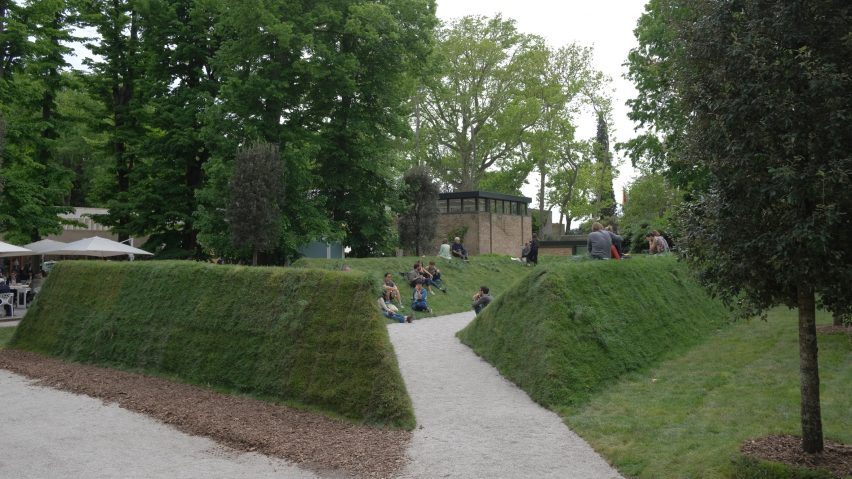
Ukraine shares its "new perception of safety" at Venice Architecture Biennale
A claustrophobic room and a maze of grassy mounds modelled on war defense structures form Ukraine's pavilion at this year's Venice Architecture Biennale.
Marking the country's first pavilion at the architecture biennale in almost a decade, the installations attempt to capture the experience of people who are seeking shelter from the Ukraine war.
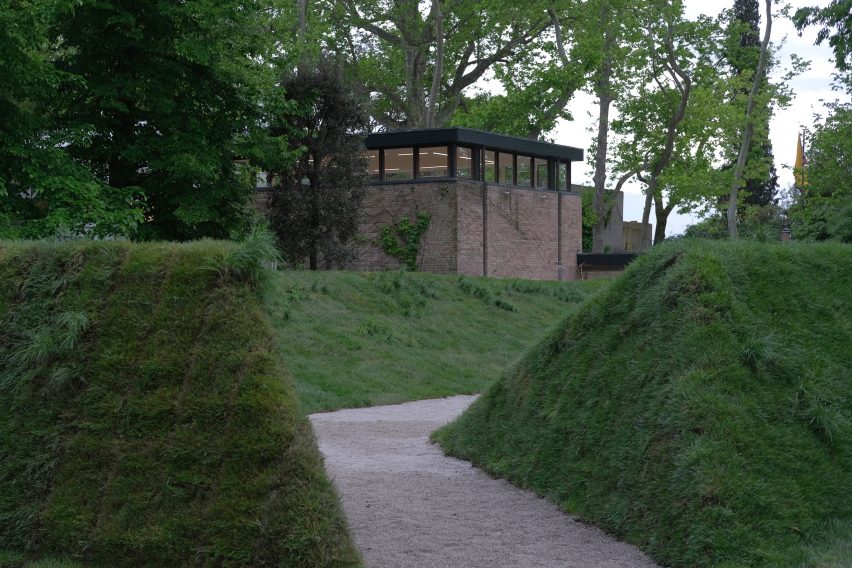
The pavilion, named Before the Future, is designed by architects Iryna Miroshnykova and Oleksii Petrov and curator Borys Filonenko across the two sites of the Venice Architecture Biennale.
The bunker-like room, located at the Arsenale, and the grassy fortifications in the Giardini are both "emblematic of feelings of safety for Ukrainian society", the curators said.
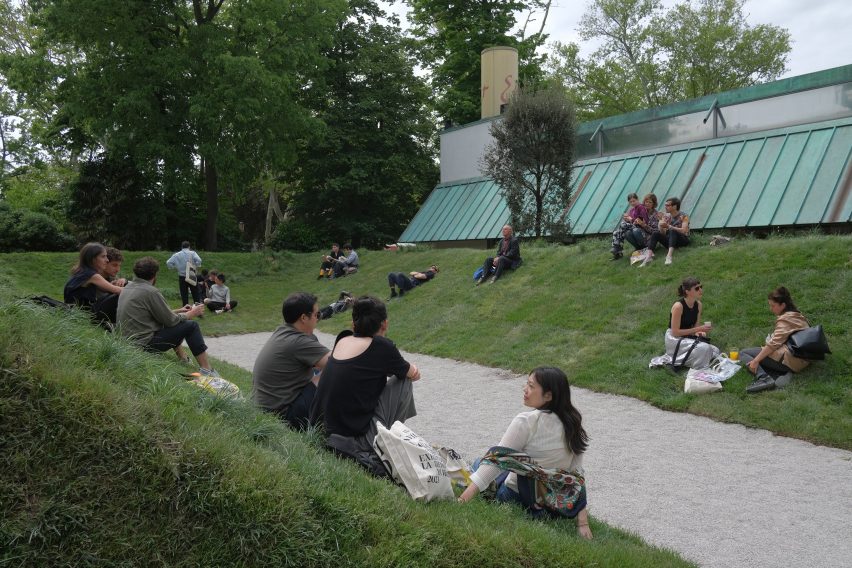
"One of the goals of our pavilion is to make a snapshot of what we are feeling, what we are experiencing in these times in the war," Filonenko told Dezeen at the pavilion's press conference.
"It's all about a new perception of safety," added Miroshnykova. "It's about a new perception of space. And we want to share this experience with our audience."
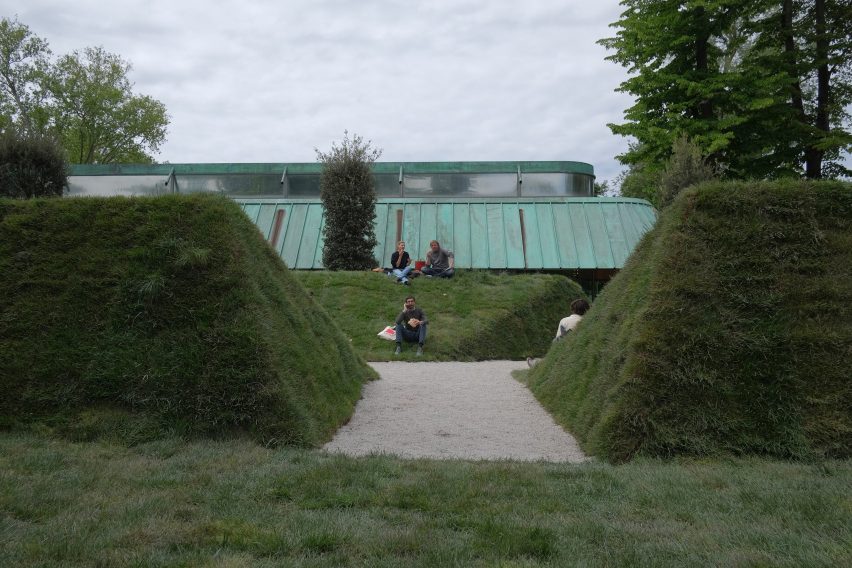
At the Arsenale, the installation transforms an existing lofty hall into a small windowless space with a low ceiling.
Deliberately claustrophobic and dark, it is intended to mimic the kind of spaces that many Ukrainians are currently being forced to find shelter ad safety.
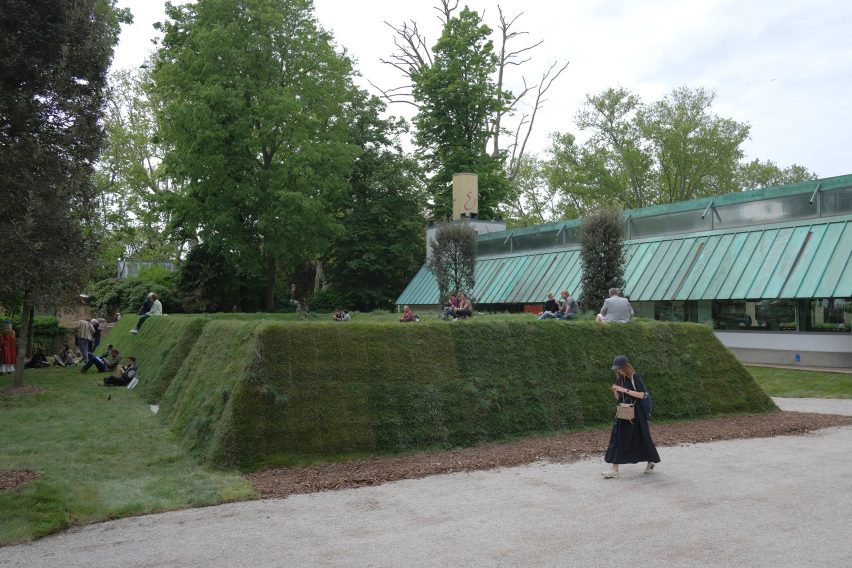
"We transformed a normally lofty hall in the Arsenale into a low-ceilinged space without any lights," explained Petrov.
"This ceiling reminds us about areas and spaces that people in Ukraine find themselves in and find safety."
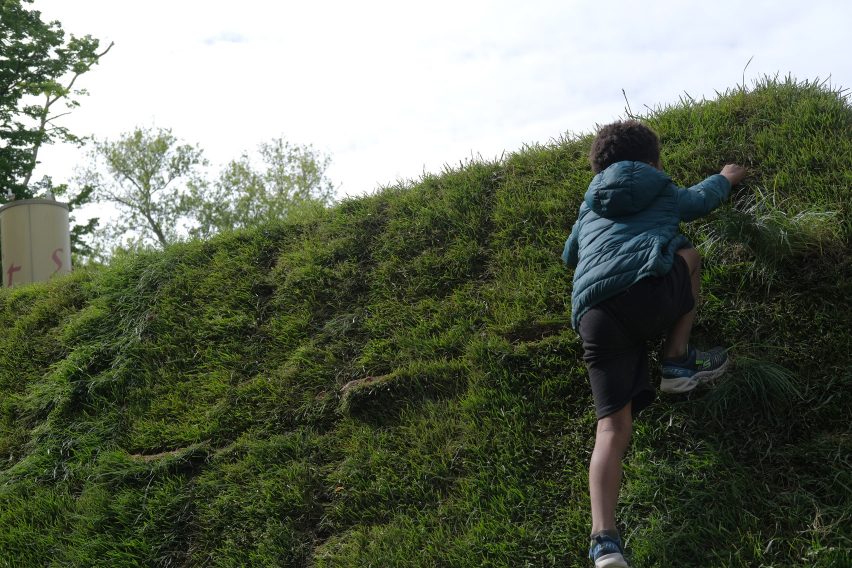
Meanwhile, over in the Giardini the studio designed a series of snaking, grassy mounds that are modelled on the Serpent's Wall – a 10th-century fortification in Kyiv.
The Serpent's Wall was repurposed during the first days of the full-scale Russian invasion and, according to the curators, helped to slow the army's advance towards the city.
"The second part is another visual of a defensive structure, which is taken from the Serpent's Wall," said Petrov.
"These structures have helped in the Russian invasion in the Kyiv region."
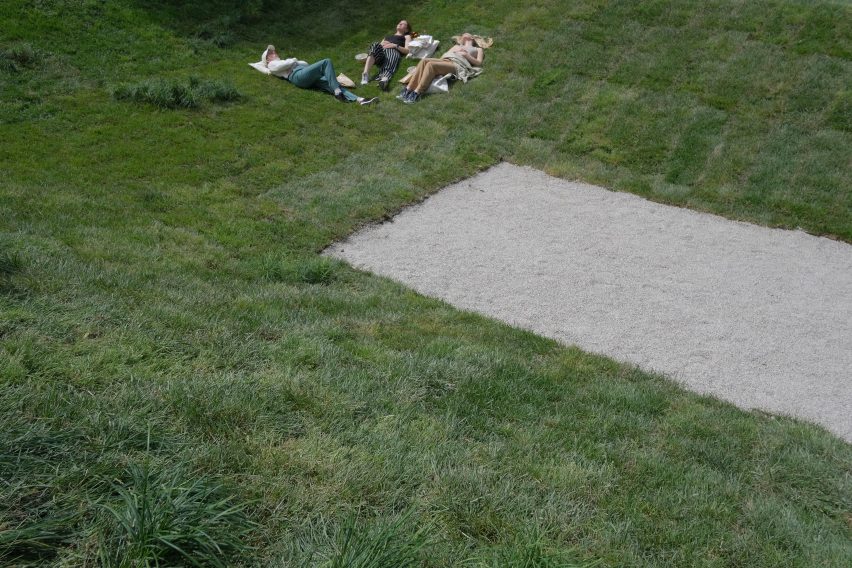
Alongside the pavilion, Miroshnykova, Petrov and Filonenko have curated a public programme of events that will take place over the two sites over the course of the event.
More than 30 Ukrainians working across architecture, art, sociology, ecology, politics and anthropology will make statements focused on both the war in Ukraine and the theme of this year's Venice Architecture Biennale, The Laboratory of the Future.
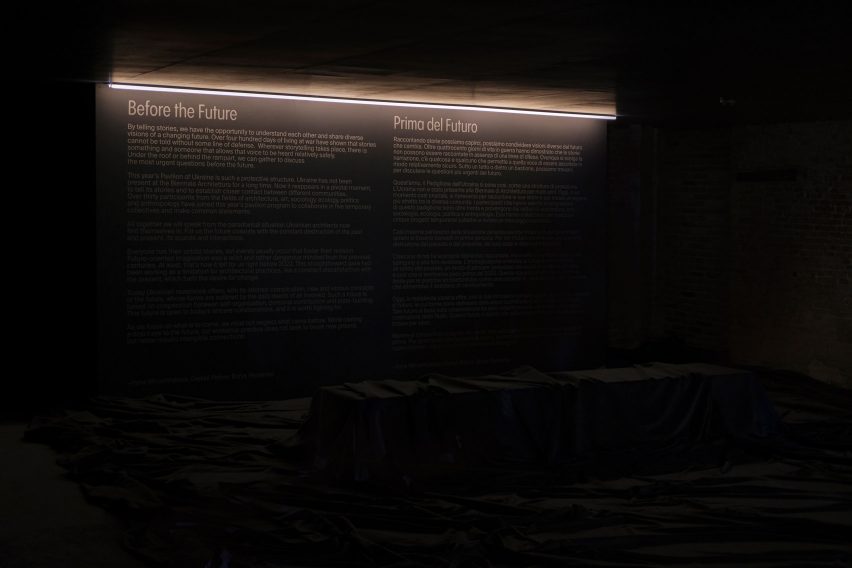
"We came up with this idea that we need to give a voice as much as possible to the people to the architects and artists from Ukraine," said Miroshnykova.
"The Pavilion of Ukraine proposes to draw our attention not just to the future, but also to the conditions of the past and present that provide the safety necessary for the construction of the future," the team concluded.
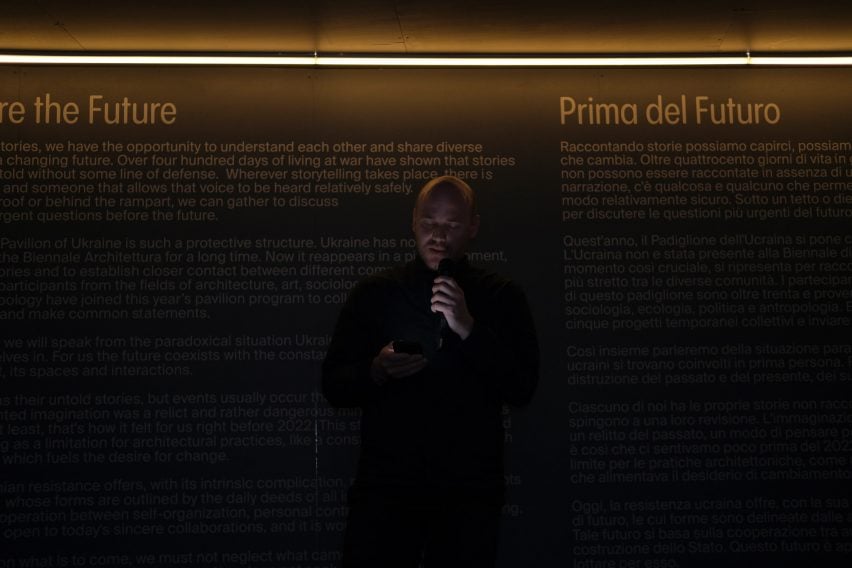
This year's Venice Architecture Biennale has been curated by architect Lesley Lokko. The main exhibition, for which we rounded up nine key projects, is also held at the Arsenale.
Other national pavilions on show include a supermarket-like space by Latvia and a reflective hemispherical theatre by France.
The photography is by Sasha Kurmaz.